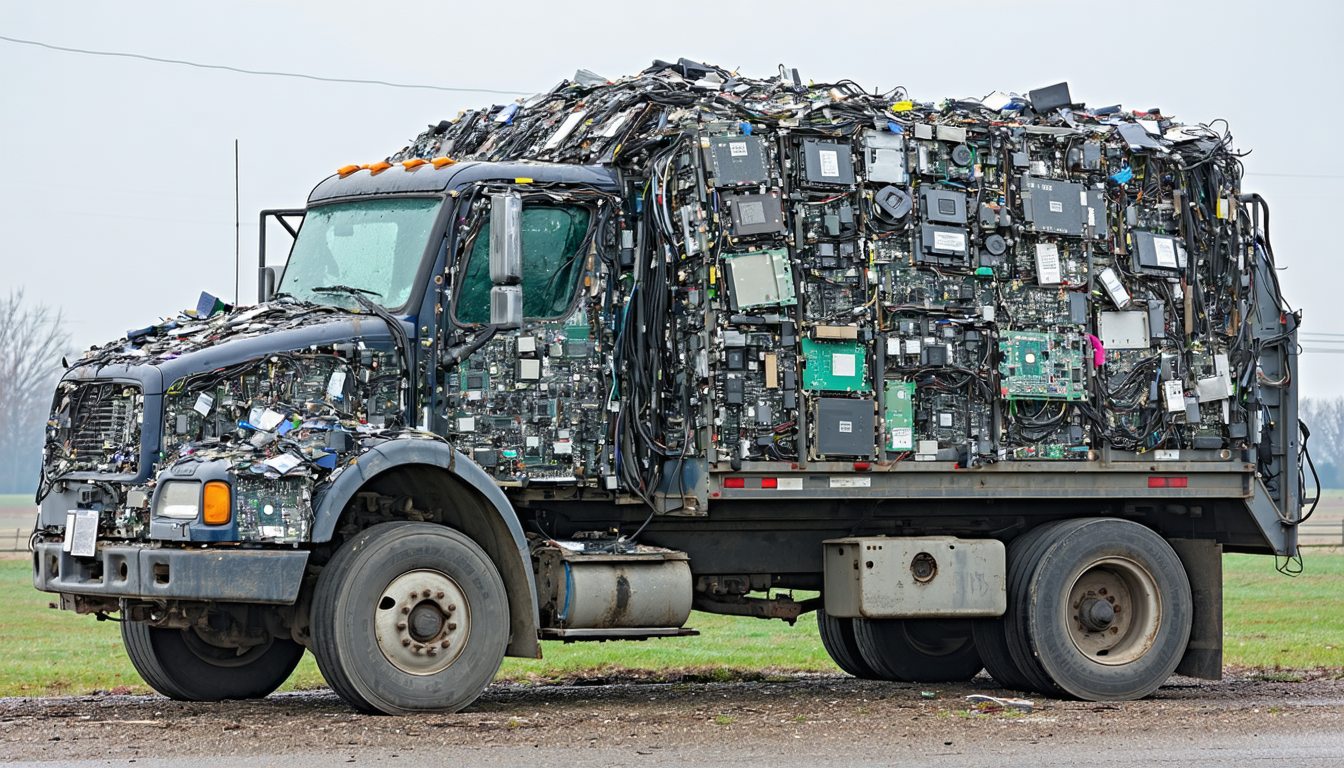In an era where technology evolves at lightning speed, electronic waste, or e-waste, has become a pressing environmental concern across the United States. With millions of devices discarded annually, finding a local e-waste drive near me is more critical than ever. This article explores the latest initiatives, events, and resources for e-waste recycling in the US, shedding light on how communities are tackling this growing issue. From upcoming drives to their broader impact, we uncover the essential details to help you responsibly dispose of old electronics.
The Growing Need for E-Waste Drives in the US
E-waste is one of the fastest-growing waste streams globally, and the United States generates over 6.9 million tons of it each year, according to the Environmental Protection Agency (EPA). Only about 25% of this waste is recycled, leaving a significant portion in landfills where toxic materials like lead and mercury can harm the environment. Local e-waste drives offer a solution by providing accessible drop-off points for old phones, laptops, and other electronics.
These events are often organized by municipalities, non-profits, and tech companies aiming to reduce landfill waste. Their importance lies not just in recycling but also in recovering valuable materials like gold and copper from discarded devices. As awareness grows, more Americans are searching for an “e-waste drive near me” to contribute to a sustainable future.
Upcoming E-Waste Drive Near Me: Where to Look
Finding a local e-waste drive near me has never been easier, thanks to online tools and community outreach. Websites like Earth911 and the EPA’s recycling locator allow users to search for nearby events by entering their zip code. Additionally, major retailers such as Best Buy and Staples often host collection days or maintain permanent drop-off locations for electronics.
For instance, in October 2023, several cities across the US announced e-waste collection events as part of National Recycling Week. Cities like San Francisco, Chicago, and Austin are hosting drives on specific weekends, with drop-off points accepting everything from batteries to old monitors. Check your local government website or social media channels for the most current schedules and accepted items.
Why E-Waste Drives Matter to Communities
The significance of e-waste drives extends beyond environmental benefits. These events protect public health by preventing hazardous materials from contaminating soil and water. They also create jobs in the recycling sector and reduce the demand for raw materials by reusing components from old devices.
According to Dr. Emily Carter, an environmental scientist at Stanford University, “E-waste drives are a vital step toward a circular economy. They encourage responsible disposal while educating the public on the hidden value of discarded tech.” Her insights highlight how these initiatives foster community engagement and awareness about sustainable practices.
Moreover, small businesses and schools often benefit from refurbished electronics donated through these programs. This dual impact—environmental and social—makes e-waste drives a cornerstone of modern waste management strategies.
Challenges and Future Outlook for E-Waste Recycling
Despite their benefits, e-waste drives face challenges like limited funding and low public participation. Many Americans remain unaware of proper disposal methods or hesitate due to data security concerns with old devices. Organizers are addressing these issues by offering free data-wiping services at collection points and increasing outreach through digital campaigns.
Looking ahead, experts predict a rise in permanent e-waste collection centers as federal and state governments push for stricter recycling laws. Potential legislation could mandate manufacturer take-back programs, easing the burden on local drives. While opinions vary on how quickly these changes will occur, there’s consensus that community involvement remains key to success.
Conclusion: Take Action with E-Waste Drives Today
E-waste drives are a crucial tool in combating the mounting problem of electronic waste in the United States. By participating in a local e-waste drive near me, individuals can play a direct role in protecting the environment and supporting sustainable practices. With upcoming events nationwide and accessible online resources, there’s no better time to act. Stay informed about drives in your area and join the movement to recycle responsibly—our planet depends on it.
Frequently Asked Questions (FAQs)
1. How can I find an e-waste drive near me in the US?
Use online tools like Earth911 or the EPA’s recycling locator by entering your zip code. You can also check local government websites or retailer programs at places like Best Buy for scheduled events or permanent drop-off locations.
2. What items are typically accepted at e-waste drives?
Most drives accept items such as laptops, smartphones, tablets, batteries, printers, and monitors. Some may have restrictions on large appliances or hazardous materials, so confirm with organizers beforehand.
3. Are there any costs associated with dropping off electronics?
Many e-waste drives are free, but certain locations or items (like CRT monitors) might incur a small fee. Always check event details to avoid surprises.
4. How can I ensure my data is safe when recycling electronics?
Before dropping off devices, back up important files and perform a factory reset. Many e-waste drives also offer data-wiping services to protect your privacy.
5. Why is participating in e-waste drives important?
These events prevent toxic materials from polluting landfills, recover valuable resources, and promote sustainability. Your participation helps safeguard the environment and supports community initiatives.


